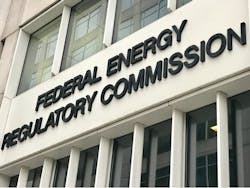FERC 2222 presents promise — but also challenges — for the US microgrid industry, according to energy policy experts who spoke this week at Microgrid 2020 Global, a virtual onference that attracted more than 4,300 people.
The federal order, expected to pave the way for aggregated distributed energy resources (DERs) to compete with traditional power plants in wholesale markets, was frequently referenced by speakers throughout the three day event, signaling its significance to microgrids. The order aims to eliminate the barriers that prevent DERs from competing on a level playing field in organized markets.
During the panel, “The Future of Microgrid Markets,” speakers said they’re cautiously optimistic about the potential effects of FERC Order 2222.
“I think it was a prudent thing for FERC to do, but now we also have to see what happens at the state level. And finally, I would say there are all the operational issues,” said Norman Bay, a former FERC commissioner and head of the energy regulatory group at Willkie Farr & Gallagher.
He asked how the industry will ensure that the Regional Transmission Organizations (RTOs) have enough visibility into what’s happening at the distribution level — and vice versa.
Now that the order is in place, RTOs must make compliance filings, he said. The stakeholder process at the RTOs is important. but it’s a difficult and involved process, and many stakeholders, including state regulators, can’t participate in a meaningful way.
“And yet they’re very important because as we know, the proverbial devil is in the details,” he said.
He’s hoping that the industry will avoid a repeat of what happened in PJM territory, where the energy storage rule for the capacity market involved a 10-hour duration requirement. “It’s just not a good decision from PJM. That’s created this barrier to participation.”
Shaping the FERC 2222 rules
It’s important that microgrid companies and firms creating microgrid components get involved and try to shape the rules that emerge in RTO markets as a result of FERC Order 2222, Bay said.
The states also have an important role to play. The FERC order carved out interconnection, cost allocation, reliability and safety issues that need to be addressed by states. That makes sense because DERs are located at the distribution level, he said.
“So do states proceed in good faith with respect to those requirements that they impose at the distribution level, or do they do things that basically make it impossible for these resources to participate in the wholesale markets?” he asked
Marissa Gillett, chair of the Connecticut Public Utilities Regulatory Authority (PURA), said that as an economic regulator, she wants DERs to be brought to scale in the most cost effective way possible and doesn’t want Connecticut ratepayers “overincentivizing anything.”
She said she’s “cautiously optimistic” that FERC Order 2222, along with FERC Order 841, which gave energy storage a big boost, will knock down barriers and allow for microgrids to scale in New England.
Challenge to state commissions
However, participating in the RTO stakeholder groups poses a challenge for state commissions.
‘I think it has to be recognized that state commissions don’t necessarily, especially in Connecticut’s case, have the resources to adequately staff these regional stakeholder groups nor do we have official seats at the table,” she said. It’s up to the commissions and stakeholders to keep each other informed about developments and the need for commissions to participate.
“So I’m cautiously optimistic, but also cautious that stakeholder processes at the regional level can be difficult for us to engage in and have our voice meaningfully heard,” she said.
Eric Coffman, director of energy programs with the Maryland Energy Administration, said that like Gillett, he’s “cautiously optimistic” about FERC Order 2222 and also concerned about the state’s ability to participate in the discussion.
“You always feel a little bit of that strain as to whether you can engage. But we see there’s some opportunity here,” he said.
He suggested that states in similar situations get involved and stay involved in the process.
“Figure out what this means to you and what you’re trying to achieve,” he said.
Looking to the future, Gillett said that by 2030, policies such as FERC Order 2222, will give way to well-defined markets so that states can start to reduce incentives and DERs can stand up for themselves.
Educating regulators
Bay said that if barriers to participation in markets are removed, DER projects will move forward. As an example of DERs participating in wholesale markets, he cited Sunrun’s successful offer of residential energy storage into ISO New England’s capacity market.
To continue this trend, regulators need education from industry players to help them move the microgrid market along, said Gillett.
“The regulators are only going to create policies and react to what’s in front of them. Providing resources and education and innovative ways for us to think through these things is not unwelcome.”
Added Bay, “If I had any advice for companies out there, for the microgrid industry, it would be not to short change the policy or regulatory side of things.” If the industry can work with regulators on policy, it can help move the microgrid market forward.
“If you were to ask me whether I’m bearish or bullish on DER and microgrids, I would tell you I’m very bullish,” he said.
Track news about FERC 2222. Subscribe to the free Microgrid Knowledge newsletter.








